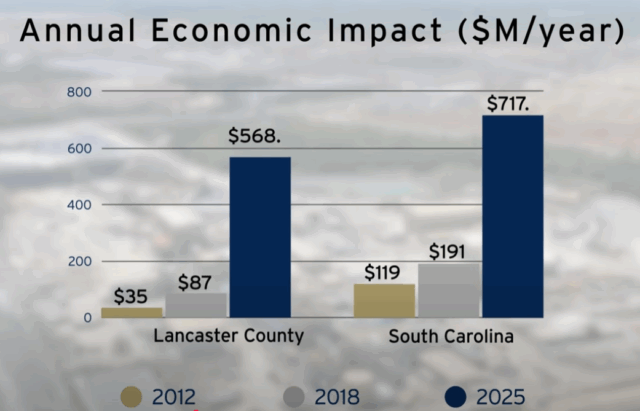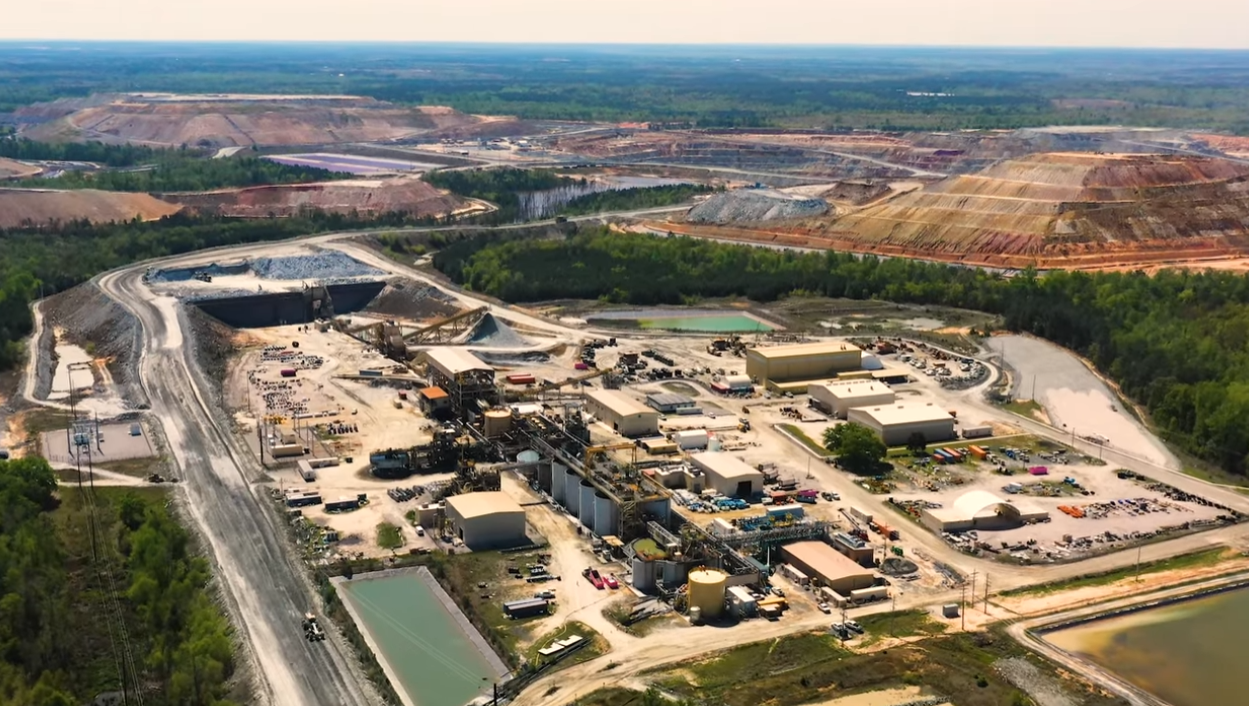The Haile Gold Mine, nestled in Lancaster County, South Carolina, represents a fascinating intersection of deep historical roots, modern mining innovation, and significant economic impact. With a legacy stretching back nearly two centuries, it stands today as the only operational gold mine east of the Mississippi River, continually redefining its role in the state’s prosperity and, most notably, in Lancaster County’s economic landscape.
A Rich Vein of History: From Discovery to Modern Revival
The genesis of the Haile Gold Mine dates back to 1827 when gold was first unearthed on the property of Captain Benjamin Haile right here in Lancaster County. This discovery ignited an early “gold rush” in the Carolinas, predating the more famous California Gold Rush and establishing the region as a significant gold producer in the burgeoning United States. Initial efforts involved rudimentary placer mining, likely panning and sluicing in creek beds. By 1837, a more structured operation emerged with the erection of the first stamp mill, mechanizing the crushing of ore to extract gold.
The mine continued to operate through turbulent times, notably supplying gold and other crucial minerals to the Confederacy during the Civil War (1861-1865). However, its operations suffered severe damage at the hands of Union General William T. Sherman’s troops in the war’s closing days.
A new era dawned in 1880 when a sophisticated New York syndicate acquired the mine. This period ushered in significant investment and a surge in large-scale operations. A transformative development occurred in 1887with the arrival of Dr. Carl Adolf Thies, a German-trained metallurgist. Thies introduced and perfected the revolutionary “barrel chlorination process.” This innovative technique dramatically increased gold yields, propelling the Haile Gold Mine to become the most profitable gold mining operation east of the Mississippi River. Its technological prowess was so renowned that even Thomas Edison reportedly visited the mine to observe and learn about Thies’s cutting-edge process. This “Golden Age” for the mine also saw the establishment of a considerable company town, complete with an office, company store, post office, and boarding house, spanning 1,800 acres right within Lancaster County.
However, prosperity was interrupted on August 10, 1908, when a catastrophic boiler explosion in the concentration room killed “Captain” Ernst Thies (Carl Adolf’s son and successor) and two others. The blast destroyed the mill, signaling the beginning of the end for that era of the mine. While the mill was eventually repaired, operations ceased definitively in 1910.
For nearly a century, the Haile Gold Mine saw intermittent and often sporadic activity, including a brief reopening during World War I for pyrite extraction. It wasn’t until 2007 that the property experienced a modern resurgence. Romarco Minerals, Inc. acquired the site and embarked on a lengthy and complex permitting process to reopen the mine. This involved extensive environmental studies (totaling over $4.5 million), addressing concerns from various stakeholders, including the Sierra Club, regarding reclamation plans and environmental bonds. Despite challenges, Romarco diligently navigated the regulatory landscape.
In 2015, OceanaGold Corporation, a global gold and copper producer, acquired Romarco Minerals, providing the capital and expertise to bring the vision of a modern mine to fruition. Construction of the new open-pit operation involved significant infrastructure development. The culmination of these efforts came on January 19, 2017, when the new Haile Gold Mine poured its first gold, marking its official return to full-scale production. The current operations utilize conventional open-pit mining methods, with plans for future underground mining in certain areas.
A Modern Economic Powerhouse for Lancaster County and Beyond
Today, the Haile Gold Mine is not just a historical landmark but a vital engine for economic growth in South Carolina, with its heart firmly rooted in Lancaster County. A comprehensive 2025 study conducted by the University of South Carolina’s Darla Moore School of Business underscores its profound impact, with results showing exponential growth since earlier reports in 2018.
The mine’s economic contributions are multifaceted and far-reaching:
- Statewide Economic Impact: The study estimates Haile Gold Mine’s total annual economic impact across South Carolina at a staggering $717.5 million. This translates into the support of 1,833 jobs statewide and the generation of $141.8 million in annual labor income. Looking ahead, the cumulative economic impact on South Carolina is projected to exceed $9.3 billion by 2037.
- Regional and Local Prosperity, Centered in Lancaster County: The impact is particularly concentrated in the immediate vicinity. In Lancaster County alone, the mine generates an astounding $568.7 million in positive annual economic impact, supporting 1,177 jobs and $106.3 million in labor income. When expanding to the surrounding six-county region (which includes Lancaster, Chester, Chesterfield, Fairfield, Kershaw, and York counties), the annual economic impact increases to $634.0 million, supporting 1,413 jobs and $117.8 million in labor income. This highlights Lancaster County’s central role in benefiting from the mine’s operations.
- Direct Employment and Local Sourcing: The mine directly employs over 800 individuals, with a remarkable 85% of its workforce residing in the surrounding communities, making it a cornerstone employer in Lancaster County. These are not just any jobs; they include specialized roles in mining engineering, geology, environmental management, safety, mobile maintenance, processing, and skilled trades like welding and drilling, providing stable and well-paying careers. Furthermore, the mine injects over $37.6 million monthly into the local economy through labor and the procurement of goods and services, fostering growth for numerous local businesses.
- Production and Investment: In 2024, the Haile Gold Mine produced more than 212,000 ounces of gold, solidifying its position as a significant domestic gold producer. This production fuels ongoing investment in the mine’s operations and future expansions, such as the recently announced potential expansion of its permitted area, lateral expansion of pit boundaries, and the introduction of underground mining, which would further extend its economic lifespan.

Commitment to Responsible Operations and Community in Lancaster County
OceanaGold emphasizes its commitment to responsible mining practices and community engagement. The modern Haile Gold Mine has invested heavily in environmental management, with a reclamation bond of $60 million to ensure proper closure and restoration of the site. Its environmental policy focuses on minimizing impact, preserving biodiversity, and managing water and air quality through rigorous monitoring and advanced treatment facilities.
Beyond its direct economic contributions, the Haile Gold Mine actively participates in the well-being of its host communities within Lancaster County. A recent example is its US$250,000 pledge over five years to the Medical University of South Carolina (MUSC) to support a new primary care residency training program at MUSC Health Lancaster Medical Center. This initiative aims to address the critical need for physicians in rural and underserved areas, creating a sustainable positive impact on local healthcare access and strengthening the regional economy beyond the mine’s operational life. The mine also engages in regular community dialogue and public hearings to ensure transparency and address concerns, reflecting its deep integration into the fabric of Lancaster County.
From its humble beginnings as a 19th-century gold discovery to its current standing as a technologically advanced and economically impactful operation, the Haile Gold Mine continues to write its compelling story, demonstrating the enduring value of Lancaster County’s natural resources and the power of responsible industrial development.










